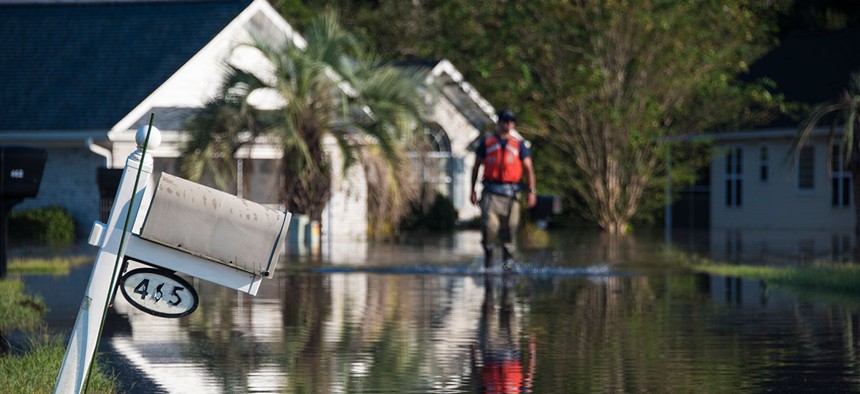Because of all the flooding, crops in the area have been destroyed. “They are under feet of water—not just one foot, but under multiple feet,” says Melissa Bailey Castillo, who works with the migrants workers at the Community Health Center in Kinston, North Carolina. The state is the country’s largest producer of sweet potatoes, and the storm could not have come at a worse time, since late summer typically marks the start of the sweet potato harvest.
In North Carolina, 75 percent of the cash crops are grown in the eastern part of the state, where the flooding has been most severe. An estimated 150,000-plus farmworkers pick these crops, often by hand: Most are immigrants or migrant laborers from Central America, and around half are undocumented. Their jobs are already plagued by uncertainty, and now Hurricane Florence could thwart what is usually the most lucrative time of the year.
When I first spoke with Castillo last week, she was driving around Raleigh buying supplies for affected farmworkers. But because of the flooding, she wasn’t able to deliver the supplies until Sunday. “I could get to work yesterday and I could not get to work today,“ she told me. “Water is literally over Highway 70.” Justin Flores, of the Farm Labor Action Committee, says some farmworkers remain in a shelter in Kinston, since many in the area still lack power, water, and cell phone service.
“Finding work is going to be really difficult for the families we serve,” says Patty Kingery of the East Coast Migrant Head Start Project, which serves farmworkers and their families. “We have a lot of families who will not have work for the remainder of the season, while the more mobile families are going to seek work elsewhere.”
Workers were pulled from the fields five days before Florence hit. “They already went a week without work and now, after this massive hurricane, they don’t even know if they have a job, period,” says Castillo. Many workers weren’t even aware that the hurricane was coming and hadn’t been told the reason they were being sent home. And when it was time to evacuate, migrants to the area also didn’t know where to go or how to get out.
But beyond the loss of work, migrant farm workers face other perils from the storm. They often live in shoddily built trailers in labor camps—or “campos,” in Spanish—that are especially vulnerable to storms: Even in the best of times, running water and functioning electricity isn’t always a given.
Daisy Aguado-Chavez, who works on a hog farm in North Carolina, evacuated the “campo” she lives in with her two young children. Unlike those working in the fields, she was expected to work during the storm, and without any better options, she took her kids with her to work. “We were in a little office and it started flooding from the bathroom and coming towards us,” she said. “We couldn’t do anything about it.”







